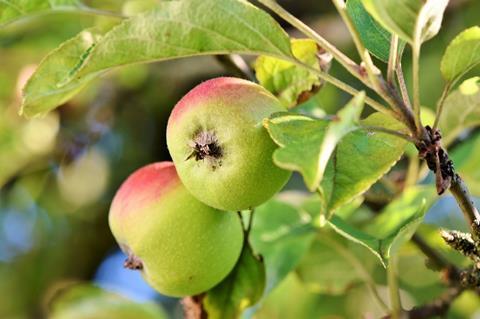A new study reveals critical insights into how apple trees respond to Glomerella leaf spot (GLS), a severe fungal disease impacting apple yields. Focusing on the regulatory roles of valine–glutamine (VQ) and WRKY proteins in plant defense, the research offers promising pathways for breeding disease-resistant apple varieties.

Apple cultivation is widespread, but Glomerella leaf spot (GLS), caused by the fungus Colletotrichum fructicola, poses a major threat, especially in China. This disease damages leaves and fruits, reducing yield and quality. Currently, GLS is primarily managed with fungicides, which have environmental drawbacks. To address these challenges, it is essential to deepen our understanding of the molecular mechanisms that drive apple susceptibility to GLS, particularly the impact of genes like MdVQ17.
READ MORE: Decoding disease defenses: miRNAs and the battle against apple pathogens
READ MORE: Unearthing the plant’s arsenal against pathogenic fungi
The research (DOI: 10.1093/hr/uhae159), conducted by Northwest A & F University and published in Horticulture Research on June 7, 2024, explores how MdVQ17 regulates apple susceptibility to GLS. The study identifies MdVQ17 as a significant modulator that increases disease susceptibility by enhancing salicylic acid degradation and pectin lyase activity.
Complex regulatory network
The study demonstrates that MdVQ17 weakens apple resistance to GLS by interacting with the transcription factor MdWRKY17. This interaction boosts MdWRKY17’s activation of key genes such as MdDMR6 and MdPL-like, which are involved in salicylic acid degradation and pectin lyase activity, leading to increased vulnerability to GLS. The results highlight a complex regulatory network that diminishes the plant’s defense and alters critical biochemical pathways, presenting new targets for breeding GLS-resistant apples.
“Understanding the interactions between MdVQ17 and MdWRKY17 provides valuable insights into the genetic factors contributing to apple disease susceptibility. This study not only identifies key regulatory components but also offers potential pathways for developing more resilient apple cultivars,” says Dr. Ke Mao, a lead researcher in the study.
These insights could shape future breeding strategies targeting the MdVQ17-MdWRKY17 complex to enhance apple resistance to GLS. By suppressing MdVQ17 expression or disrupting its interaction with MdWRKY17, it may be possible to develop apple varieties that are less dependent on chemical fungicides, promoting more sustainable apple production.







No comments yet